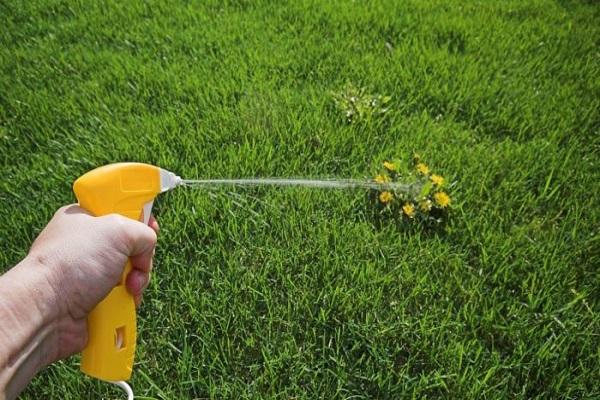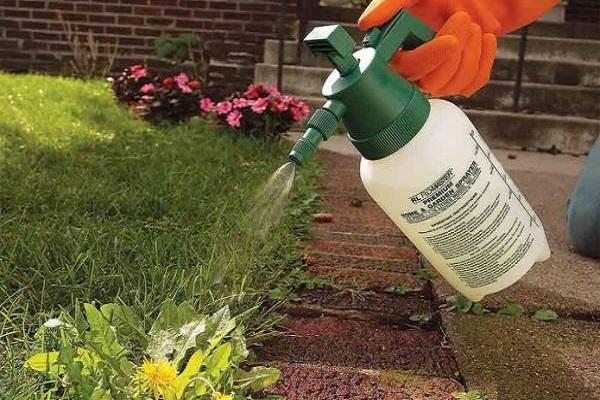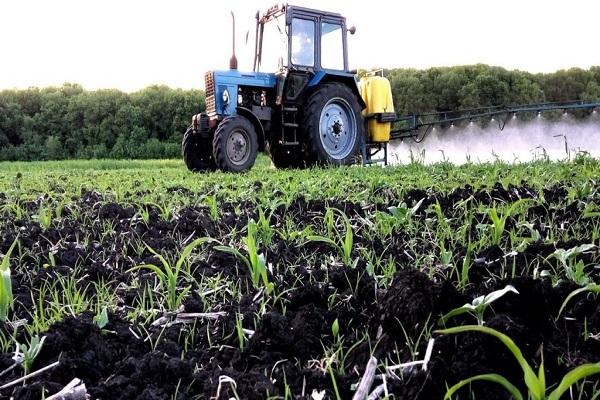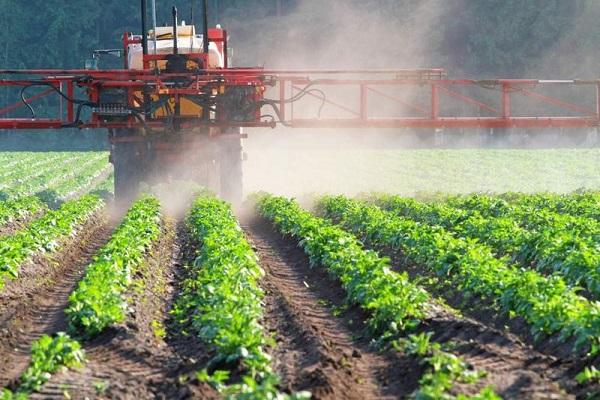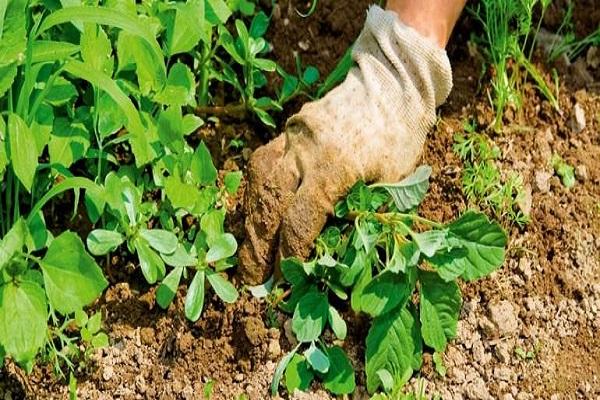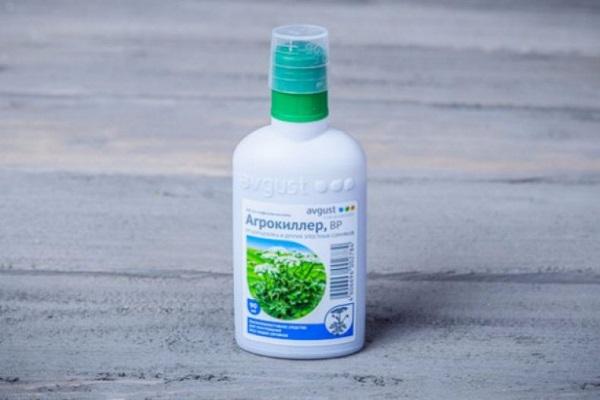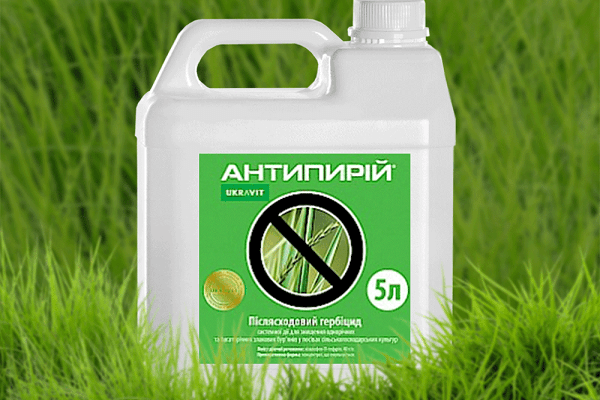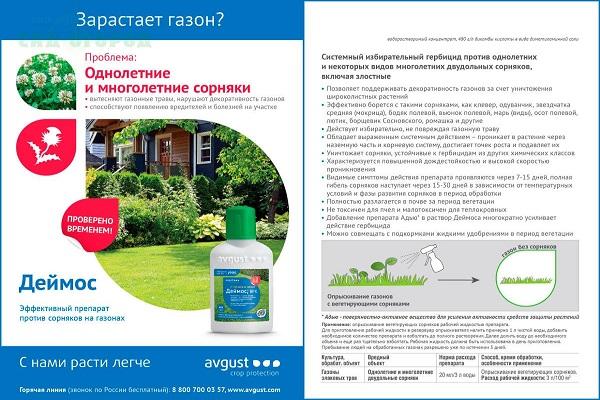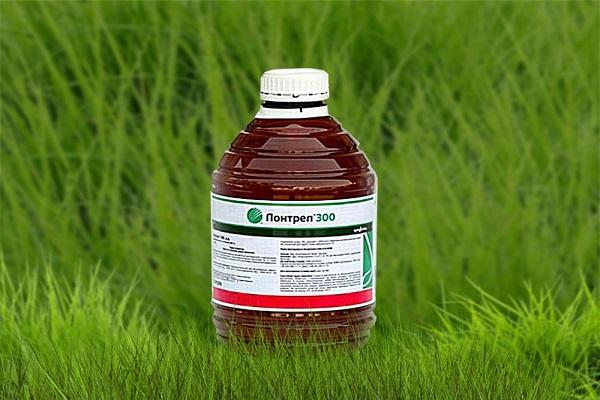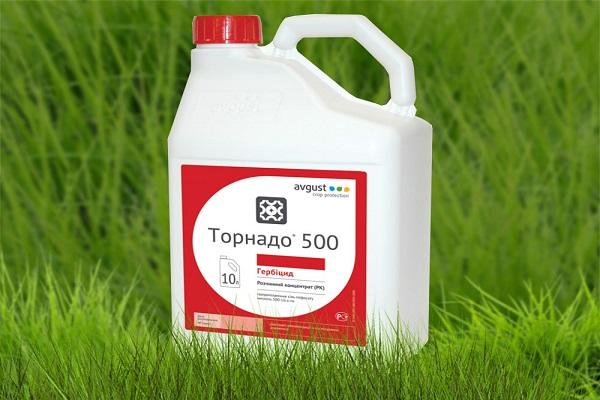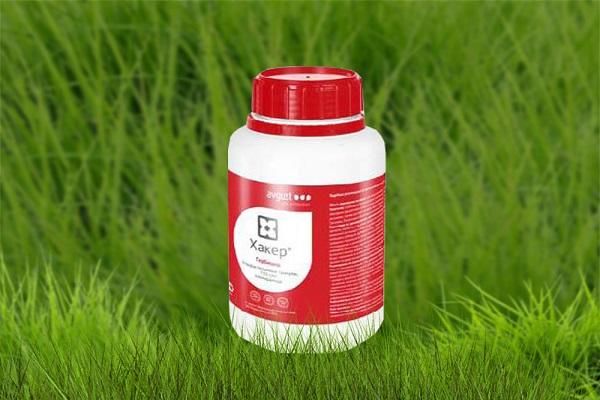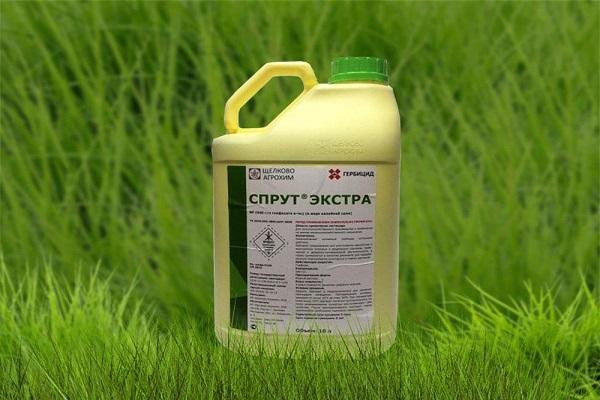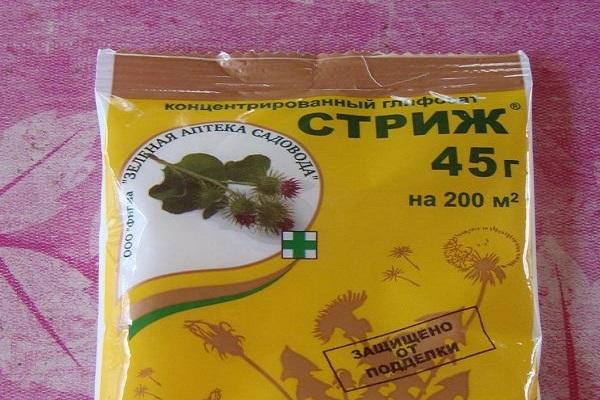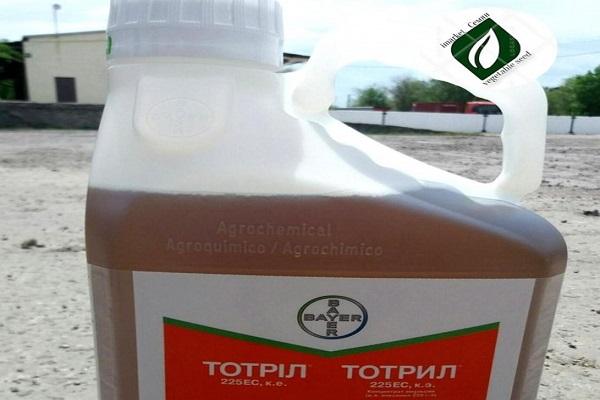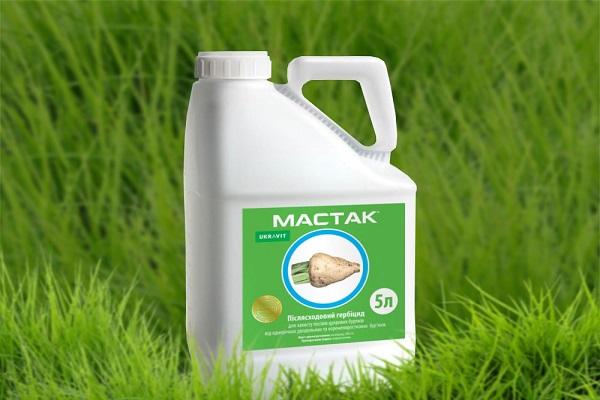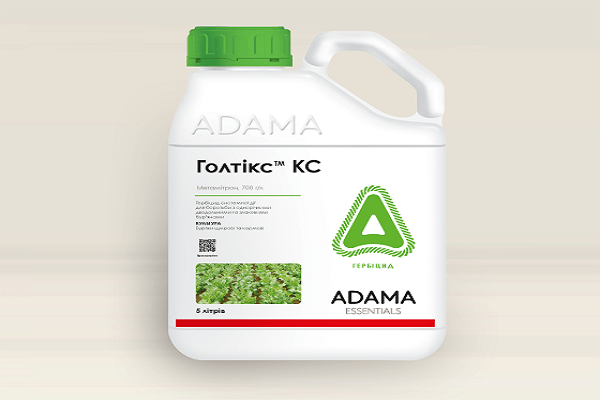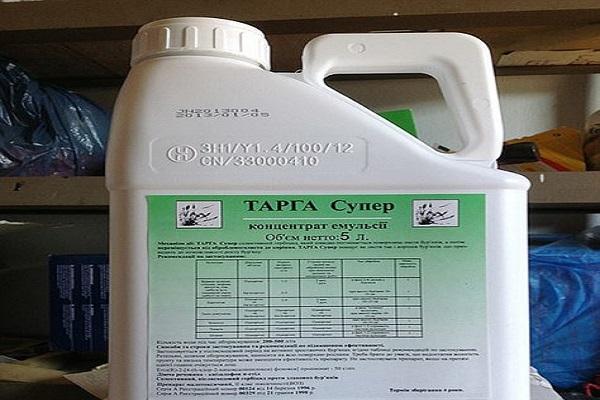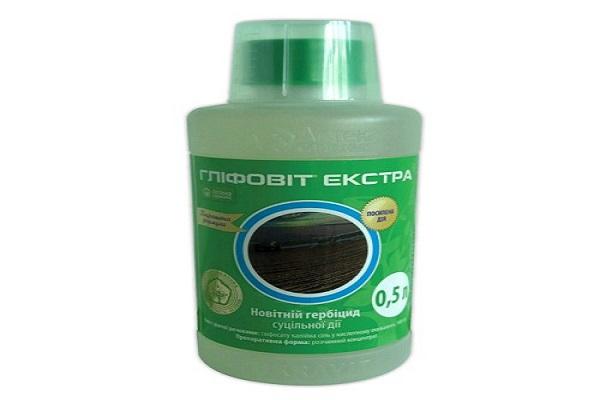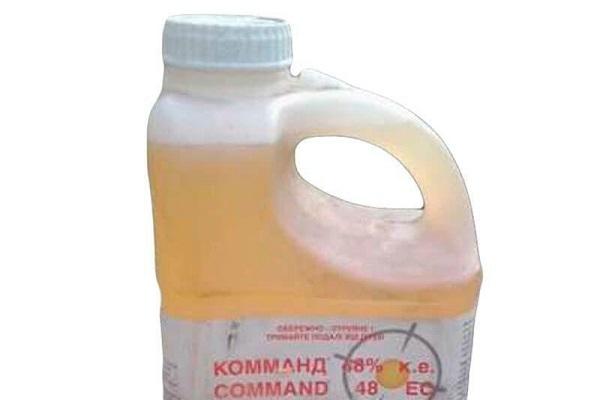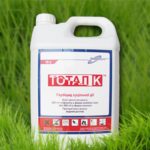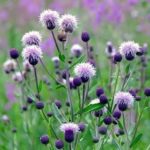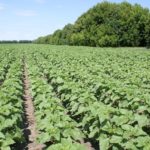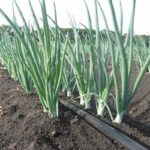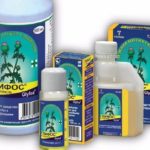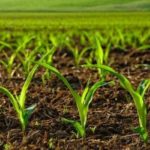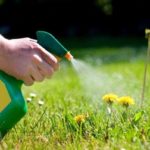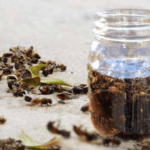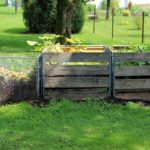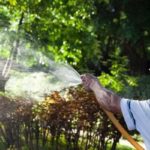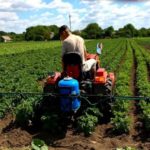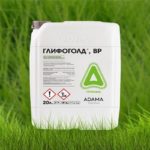Ridding an area of weeds is not an easy task. Weeds spoil the appearance of cultivated plantings and interfere with the normal growth of plants. Weeding by hand is a labor-intensive process that takes a lot of effort and time, and also does not give long-lasting results. Herbicides are modern means of chemical protection against unwanted vegetation. Let us consider the spectrum of action of technologically advanced preparations and instructions for their use.
- Why are herbicides needed?
- What types of herbicides are there by type of action?
- Continuous action
- Selective action
- How to dilute funds
- How to use drugs
- Spray method
- Deadlines for depositing
- Harm to humans
- The best herbicides for weeds
- "Agrokiller"
- "Antiburyan"
- "Antipyrey"
- "Arsenal"
- "Deimos"
- "Zenkor"
- "Lapis lazuli"
- "Lontrel"
- "Miura"
- "Roundup"
- "Tornado"
- "Tornado BAU"
- "Hurricane"
- "Hacker"
- "Chistopol"
- "Chistogryad"
- "Octopus extra"
- "Corsair"
- Dr. Klaus
- "Swift"
- "Prishance"
- Selection of herbicides for different plants
- For the garlic
- For raspberries
- For lawns
- For strawberries
- For the bow
- For zucchini
- For wheat
- For pumpkin
- For melon
- For carrots
- For beets
Why are herbicides needed?
Weeds deplete the soil, take away nutrients from varietal plants, are a source of diseases and absorbers of organic fertilizers. The level of labor costs can be reduced by using modern means - herbicides.
Benefits of using weed killers:
- Destruction of weeds, preventing the spread of weeds to neighboring dachas.
- Fast, systemic and long-lasting effect.
- There is no need for frequent mechanical soil weeding.
- Control of annual and perennial plants, including trees.
Weeding plants by hand often leads to damage to the stems and leaves of cultivated plants, and the underground root part suffers. Herbicides are sprayed under the root of the weed during the pre-emergence or post-emergence period of cultivated plants; the varietal plant does not suffer from mechanical stress.
What types of herbicides are there by type of action?
Chemical preparations - herbicides differ in their spectrum of action, chemical composition, and method of action on plants. The classification of drugs is extensive.
Continuous action
A herbicide with a continuous (general) mechanism of action destroys and clears the area of all types of plants. Drugs come in broad and narrow spectrum.Such products are used to prepare land for sports fields, lawns, and to clean roadsides and irrigation canals.
Selective action
Selective action drugs are used in agriculture. Such herbicides are called selective; they affect only certain species and families of weeds.
How to dilute funds
In most cases, herbicides are available in the form of concentrates and must be diluted with water. It is best to use soft rainwater. Experienced gardeners add a little ammonium sulfate to the resulting mixture for better absorption of the main substance.
Before preparing the working mixture, it is important to read the instructions. It is necessary to follow safety precautions and observe the dosage.
How to use drugs
The instructions indicate all the features and methods of using the herbicide, highlighting the stages of preparing the working mixture. Spraying is recommended to be carried out in calm weather, without precipitation.
Avoid contact of the active substance with exposed areas of the body, hair and clothing. The solution must be used with caution. Be sure to familiarize yourself with the toxicity class of the herbicide used.
Spray method
The prepared solution must be used immediately after mixing, regardless of whether the treatment is for annual or perennial weeds. When diluted, herbicides begin to lose effectiveness after 2 hours. The drug is toxic; spraying is carried out in a respirator and gloves.
Often the instructions indicate the recommended types of sprayers and a list of necessary equipment for spraying, as well as the technique for using the product. The spraying method can be ground or contact.
Deadlines for depositing
The application period is determined by the growing season of weeds and cultivated plants and recommendations for the use of the pesticide.
Typically, the use of a herbicide is carried out before sowing or planting varietal grasses - a popular way to kill weeds before sowing cultivated grasses, in particular lawn grass. Spraying is often carried out when the weeds have reached a height of more than 3 centimeters or immediately after harvesting.
Harm to humans
Important! When using herbicides, you must wear gloves, a protective suit, a headscarf and a respirator..
Herbicides are pesticides belonging to various classes of danger to humans and warm-blooded animals. Chemistry is harmful to humans in any case. Be sure to read the safety precautions for using the product you choose. After treatment, it is recommended to leave the area and stop working on it for at least 24 hours. Safe non-selective herbicides for humans begin with hazard class 3 according to the classification.
The best herbicides for weeds
The modern chemical industry offers domestic and foreign herbicides with different types of action on weeds. Let's look at the most popular and best of them.
"Agrokiller"
Systemic pesticide of continuous action. The main active ingredient is isopropylamine salt. The drug is highly toxic and is not recommended for use in gardens and vegetable gardens where fruits and vegetables grown for food grow. "Agrokiller" is dangerous for bees and humans.
Penetrates into plants through the green ground part. Inhibits the process of photosynthesis and disrupts the synthesis of amino acids. After use, re-treatment is not required; the drug is highly effective.
"Antiburyan"
Continuous action systemic herbicide. Suitable for the destruction of both annual and perennial grasses on the site. Kills more than 300 species of weeds. "Antiburyan" does not accumulate in the soil and does not affect the following plants in the crop rotation.
The active ingredient is isopropylamine salt. Available in the form of an emulsion concentrate.
"Antipyrey"
Systemic pesticide with post-emergence action. Recommended for use in planting vegetables, rapeseed, and potatoes. The main active ingredient is chisalofop-P-tefuryl. When it gets on the leaves of weeds, it disrupts lipid metabolism, the result of the treatment is noticeable already on the third day.
"Arsenal"
A continuous action herbicide, the main active ingredient is imazapyr. Available in the form of a water-soluble concentrate. Suitable for combating hogweed. Efficiency 90%, not washed off by rain. The poison is absorbed by weeds through the leaves and root system simultaneously. Belongs to the 2nd class of danger to humans, dangerous to bees and inhabitants of water bodies.
"Deimos"
Systemic pesticide of domestic production. Penetrates the weeds through the leaves and root system simultaneously, ensuring the destruction of thistle. "Deimos" is prohibited for use in vegetable plantings. "Deimos" is classified as hazard class 3 to humans.
"Zenkor"
For weed control in potato plantations and tomatoes, valued for its ability to quickly control weeds. The active ingredient is metribuzin. Penetrates into plants through the leaves and root system. Treatment can be carried out before or after germination. Non-toxic to bees, has minor restrictions for use in areas near water bodies.
"Lapis lazuli"
A selective pesticide that is effectively used on tomato and potato plantings. Penetrates into plants through the leaves and root system. It is distinguished by its affordable price and high effectiveness in controlling weeds. The active ingredient is metribuzin. The protection period is up to 60 days.
"Lontrel"
A selective action drug for the destruction of difficult to remove weeds. The active substance is clopyralid. It affects weeds through the leaves and quickly penetrates the root system. Does not cause resistance. Safe for humans, bees, warm-blooded animals and aquatic microorganisms.
"Miura"
A selective agent, the active substance is chisalofop-P-ethyl. Available in the form of an emulsion concentrate. Used to control weeds in vegetable crops. Features a low consumption rate without loss of efficiency. Has a long-lasting effect and is safe for humans.
"Roundup"
Systemic herbicide of continuous action. The active substance is glyphosate. Penetrates weeds through leaves and quickly reaches the root system. Blocks metabolic processes in the plant. Used in gardens and orchards. Effective against hogweed, trees, and bushes. Safe for humans.
"Tornado"
Full action chemical. The active ingredient is isopropylamine salt. It is one of the safest herbicides. Convenient to use, processing can be carried out at any time at different temperatures. Safe in crop rotation. Non-toxic to bees, humans, small animals, and water inhabitants.
"Tornado BAU"
Continuous action drug, active substance - glyphosate. Penetrates into weeds through leaves. The drug is safe for humans and animals; when used correctly, it increases the germination of crops.Available in the form of an aqueous solution.
"Hurricane"
Systemic pesticide of continuous action. The active substance is glyphosate. Recommended for use on personal plots. Spraying is carried out before the crops emerge. Not dangerous for bees and humans, dangerous for the inhabitants of water bodies. The quality of processing is not affected by ambient temperature.
"Hacker"
Systemic post-emergence pesticide with selective action. The active substance is clopyralid. “Hacker” is capable of destroying difficult to remove weeds, in particular thistle. Used to clean the soil under the lawn. Non-toxic to bees, humans, small animals, and water inhabitants. Safe in crop rotation.
"Chistopol"
Systemic herbicide of continuous action. The active ingredient is isopropylamine salt. Available in the form of an aqueous solution. Treatment is carried out in the temperature range from +12 0From to +30 0C. Belongs to the 3rd class of danger to humans. "Chistopol" is safe for bees.
"Chistogryad"
Systemic pesticide of continuous action. The active substance is glyphosate. “Chistogryad” refers to desiccants, chemicals that can dehydrate plants. Suitable for cleaning areas for sowing lawn grass. Washed away by rain. Belongs to the 3rd class of danger to humans.
"Octopus extra"
Systemic drug with continuous action. The active substance is glyphosate. Available in the form of salt. The pesticide can be used only before planting cultivated plants. Penetrates into plants through the leaves, then reaches the root system and blocks all metabolic processes, the weed dies. Belongs to hazard class 3.
"Corsair"
Selective action, active substance - bentazone. Available in the form of a water-soluble concentrate. Treatment is carried out after germination.Can be used with underseeding of clover and alfalfa.
Dr. Klaus
A selective or continuous action agent, the active substance is glyphosate, effective against hogweed, dandelion, and burdock. Used on garden paths. Suitable for cleaning areas for sowing lawn grass.
"Swift"
A systemic drug with selective action, the active substance is glyphosate. Available in the form of an aqueous solution. Not dangerous for bees and humans, belongs to the 3rd toxicity class. Effective against wheatgrass and thistle. It is used in vegetable plantings, for cleaning garden paths and areas along fences.
"Prishance"
Systemic two-component post-emergence preparation with a selective spectrum of action, the active substance is ethylhexyl ether. Moderately hazardous to humans, low hazardous to bees. Available in the form of an emulsion.
Selection of herbicides for different plants
To completely destroy weeds and improve the quality of treatment, it is important to study the instructions for the drug and determine which varietal crops the herbicide is suitable for. It is necessary to determine the optimal consumption rate. If varietal plants are planned to be eaten, preference should be given to safe selective herbicides.
For the garlic
When using, it is important to observe the dosage and create the necessary conditions for processing. For garlic plantings it is recommended to use:
- "Totril";
- "Stomp";
- "Goal";
- "Hurricane Forte"
If the standards for pesticides are strictly observed, harmful components do not accumulate in the fruits of cultivated plants.
For raspberries
You can increase the raspberry yield and rid the fragrant berry plantings of weeds by using herbicides. To clean raspberry plantations you can use:
- "Antipyray";
- "Mustak";
- "Mortal."
The preparations are applied between the rows, before the beginning of the growing season and berry picking. It is enough to carry out one treatment per season.
For lawns
To clean the soil under the lawn, it is recommended to use continuous action products:
- "Hacker";
- "Clean Garden";
- Dr. Klaus.
You can get rid of weeds on your site for a long time using herbicides or sowing areas with lawn grasses. To achieve maximum weed control and a beautiful lawn, the area must be prepared before planting the grass.
For strawberries
When strawberry plantings are overgrown with weeds, the yield is significantly reduced. To facilitate manual labor, it is recommended to use:
- "Goltix";
- "Tornado";
- "Roundup".
The preparations are applied between the rows, before the beginning of the growing season and berry picking. It is enough to carry out one treatment per season. Pay attention to the hazard class for humans.
For the bow
You can preserve onions and increase productivity by using herbicides:
- "Stomp";
- "Roundup";
- "Targa".
Herbicides suitable for onions different spectrum of action.
For zucchini
According to experienced gardeners, Hurricane Forte is recognized as an effective and safe herbicide for squash beds.
For wheat
Herbicides for wheat include:
- "Herbitox";
- "Lapis lazuli";
- "Magnum";
- "Prima";
- "Ballerina".
It is recommended to use herbicides together with germination and plant growth stimulants.
For pumpkin
For pumpkin use:
- "Antiburian";
- "Glyfovit Extra";
- "Hurricane Forte"
The preparations are applied between the rows before the beginning of the growing season and harvesting of vegetables.
For melon
Effective for melons:
- "Hurricane Forte";
- "Karate Zion"
Spraying is carried out during the weed growing season.
For carrots
You can protect carrots from weeds using herbicides:
- "Stomp";
- "Command";
- "Panther".
Treatment is carried out after germination. After the weeds die, the beds are loosened and the carrots are fed.
For beets
The following preparations are recommended for treating beet beds against weeds:
- "Eptam";
- "Goltix 700";
- "Caribou".
If the instructions, dosage and processing time are followed, beets do not suffer from the use of pesticides, and the quality of the crop does not decrease.

